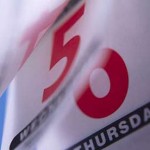 The Bankruptcy Process Follows a Typical Timeline:
The Bankruptcy Process Follows a Typical Timeline:
Questions about how the process works, what the steps are, and what the timeframes are tend to be very common. Don’t worry, I have compiled the following information to answer these questions and help you understand the basics.
CREDIT COUNSELING BRIEFING:
An individual cannot file Chapter 7 or 13 unless he or she has received individual or group credit counseling during the 180-day period preceding the date of filing of the petition. You can obtain the counseling at www.cricketdebt.com. However, there are many other companies that provide this service on the internet or over the telephone as well. Prices typically range from $35 – $50 per couple.
The purpose of the briefing is to outline the opportunities for available credit counseling and assist the individual in performing a related budget analysis. This briefing takes place over the phone or internet and is typically accomplished in less than an hour.
MEDIAN INCOME
If the debtor’s “current monthly income” is less than the median income for the debtor’s home state, then the debtor will likely be able to file for bankruptcy. “Current monthly income” is defined as the debtors’ average monthly income from all sources derived during the 6-month period preceding the date of determination. The median income depends on the number of household members. The data required to determine the median income applicable to the debtor can be found on the U.S. Trustee’s Means Test Page.
If the debtor’s “current monthly income” is more than the median income, then the debtor is subject to means testing.
THE MEANS TEST
The Means Test is performed by reducing the debtor’s current monthly income by his or her expenses, then multiplying the difference by 60. The result will determine whether the debtor can file Chapter 7, or whether a Chapter 13 will be necessary.
The debtor’s allowable monthly expenses are governed by the IRS and fall into different categories depending on the type of expense:
IRS National Expense Categories. Expense amounts for the categories below will be taken from National Expense Categories a single table maintained by IRS for all states. [§707(b)(2)(A)(ii) (I) & (II)]
Apparel and services. Includes shoes and clothing, laundry and dry cleaning, and shoe repair.
Food. Includes all meals, home or away.
Housekeeping supplies. Includes laundry and cleaning supplies; postage and stationary; other household products: cleansing and toilet tissue, paper towels and napkins, lawn and garden supplies, and miscellaneous household supplies.
Miscellaneous. A discretionary allowance.
Food & clothing expenses may be increased by 5% above the allowance when “reasonable & necessary.”
IRS Local Standard Expenses. Expense amounts for the categories below will be taken from the IRS Local Standard Expenses table, based upon the county in which the debtor resides. [§707(b)(2)(A)(ii) (I) & (II)]
Utilities. Includes gas, electricity, water, fuel oil, coal, bottled gas, trash and garbage collection, wood and other fuels, septic cleaning, and telephone.
Housing. Usually, only expenses for the place of residence are considered to be necessary. Housing expenses include: mortgage or rent, property taxes, interest, parking, necessary maintenance and repair, homeowner’s or renter’s insurance, homeowner dues and condominium fees.
Transportation. Vehicle insurance, vehicle payment (lease or purchase), maintenance, fuel, state and local registration, required vehicle inspection, parking fees, tolls, driver’s license, public transportation. Transportation costs not required to produce income or ensure health and welfare are not necessary.
Assuming the debtor passes the Means Test, and his/her income and expense analysis is ok, we then proceed with filing the case.
THE MEETING OF CREDITORS (Sometimes referred to as the 341 Hearing):
The Meeting of Creditors typically takes place approximately 30 days after the case is filed. I will notify you of the date once it is scheduled, which usually happens the day after the case is filed. While it is called the “Meeting of Creditors”, creditors rarely show up at these meetings. It is really just a meeting with the Trustee which is required by the bankruptcy code. The Trustee’s job is to examine you under oath and make sure you have listed everything in your papers accurately and they may have a few questions for you about your income or assets. These meetings are usually very brief and typically take approximately 5-10 minutes. However, in cases where the debtor runs his or her own business, the trustee may have a few extra questions about the business income and assets.
DEBTOR EDUCATION/FINANCIAL MANAGEMENT COURSE
In addition to the Credit Counseling Course, Debtors have 45 days from the first date set for their Meeting of Creditors to complete the course and have the Certificate of Completion filed with the court. Again, this course can be completed over the internet at a variety of places, including www.cricketdebt.com.
DISCHARGE
60 days after the Meeting of Creditors, if no creditors have objected to the discharge, the court will proceed with entering the Discharge Order. This can take a couple of weeks, but the whole process for a Chapter 7 bankruptcy typically takes about 3-4 months from filing to discharge. The Discharge Order is powerful and prevents creditors whose debts were discharged from ever even attempting to collect on the debt again.
By Doug Beaton